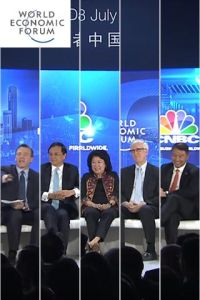
Read or listen offline
Amazon KindleRecommendation
At the World Economic Forum’s Annual Meeting of the New Champions in Dalian, China, in July 2019, a panel of trade and finance experts addressed the question, “Is there still hope that we can actually move beyond this current trade war?” At a June 2019 meeting of the G20, the United States and China called a truce. But by August, amid newly escalating tensions and tariffs, China had refused to buy any US agricultural products, and the Trump administration had planned fresh tariff hikes in return. Thus, this July discussion may well define the zeitgeist for 2019.
Summary
About the Speakers
Charles Li is chief executive of the Hong Kong stock exchange. Economist Mari Elka Pangestu is professor of public finance at the University of Indonesia. Timothy Stratford is a former US assistant trade representative. Yi Xiaozhun is deputy director general of the World Trade Organization. Geoff Cutmore is a financial journalist for CNBC Europe.

















Comment on this summary